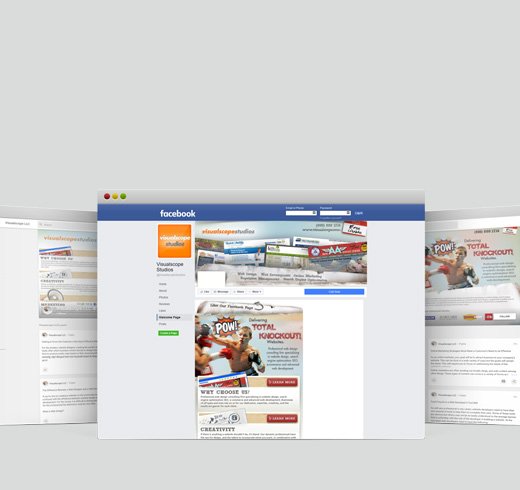
-
SECTIONS
Who Should Do Your Marketing?
Marketing Defined
What is Successful Marketing?
Common Mistakes in Marketing
What Must Go Right for Advertising to Work
How Much Should You Spend on Advertising?
What If You Are Out of Money?
Methods to Increase Revenues
Who Should You Advertise To?Common Mistakes in Marketing
Now that we’ve discussed the end results of good marketing, let’s talk about some of the common mistakes people make in marketing.1. Confusing advertising with marketing. Advertising and marketing are very different things. There are many ways to market your business, and advertising is only one way to do it. In fact, advertising is often the most expensive way to market your business. If you think advertising is the same thing as marketing, you have just limited yourself to only using the most expensive way to market your business. There are lots of ways to market your business that are cheaper than advertising, and often times more effective. We will be talking about these methods throughout this article.
In fact, let me give you one method right now. Talk to 3 of your customers and ask them about their overall experience. What is the most dissatisfying thing about your service? Their answers will tell you exactly what you need to do to improve.
2. Throwing money at advertising without understanding the big picture of marketing. Most people think that if they spend X dollars on their website and online marketing campaign, they will get Y amount of business. If you want to get more business, you just need to spend more money in advertising, right? This is absolutely wrong. Spending more money on advertising does not necessarily mean more business! More often than not, it just means you’ve spent more money, and you now have less money in the bank account. Spending more on advertising may or may not be the key to bringing in more business. As you’ll learn, effective advertising requires you to deliver the right message to the right people at the right time in the right way. Simply having more website ads, or a bigger Pay Per Click budget is often not the way to bring in more business. How effective are your PPC ads? Are you advertising in the right place? Who is seeing your ads? Are these people the best customers for you? Your consultant will be going into great detail with you regarding the effectiveness of your advertising.
3. Thinking that effective marketing must be expensive. If all you do is listen to the sales pitch of some search marketing rep and sign up with them, you might be misled to believe that effective marketing means spending a lot of money. These sales reps want to make you think this way, because the more money you spend with them, the more commission they make. If you become emotional and start thinking how this one advertising will bring in all the business in the world for you, you become an easy prey for these sales reps to take your money. The truth is – effective web marketing does not have to be expensive. If your marketing is done right and done methodically (rather than emotionally), it’s not as expensive as you might think.
I cannot emphasize enough that marketing is a lot more than advertising or selling. It’s about providing an excellent customer experience, which involves putting systems in place so that customers get a consistent, high quality experience no matter which employee is working that day.
Remember McDonald’s? No matter who is working there that day, you will always get the same experience. They always put X amount of salt into the fries, you always get your food within X number of minutes, and the employees always greet you the same way.
That’s how you want your business to be. The key to marketing is offering an excellent customer experience. You can’t just offer excellent service one day and crappy service another day. No matter how busy you are, no matter who is working that day – every customer must get the same customer experience every single time. How do you do that? You must implement systems and procedures, and make every employee follow them. This is how we do things around here. They either follow it, or they are out the door.
You see, since marketing is how customers perceive you, there are lots of ways to improve how you are perceived. Buying a bigger ad might increase your visibility when people open up the Yellow Pages, but do you see how there are a lot cheaper and more effective ways to improve how you are perceived? It might be as simple as training your employees on how to answer the phone. This is what you say when you pick up the phone, this is what you say when a customer asks for this, this is what you say when a customer shouts at you…so on and so forth.
You begin to set rules that your employees must follow. For example, answering each online visitor questions in a courteous and efficient manner. The exact rules and procedures will depend on your business, but you must have some kind of rules that everybody follows. And guess how much it costs to write down a couple of rules and make every employee follow them? It costs nothing. And guess how much better you’ll be perceived in the eyes of your customers? A lot. Is this effective marketing? You bet it is.
I am not saying advertising is not important. Advertising is one important way to attract new customers. In fact, we will be dedicating a large portion of this article to the subject of advertising. But you should always remember that marketing is how you’re perceived by your customers, and advertising is only one way (and often the most expensive way) to improve that perception.
What Must Go Right for Advertising to Work
Since advertising is one important way to bring customers into the website or store front, we will now discuss this subject in detail. Before we delve into the details of advertising, let’s talk about what must go right in order for advertising to work.Very simply, you must meet your promises. How many times have you seen the web site or advertising of some company, thought that they must be a big and reputable company, used their service – only to discover that the service they provided was way below your expectations? Did you become a repeat customer? Did you tell anyone not to go there?
You see, successful advertising brings customers in the door, but you must keep your promises. If your ads portray a much better image of your business than it actually is, customers won’t stay. They might begin telling their friends not to come to you, so your advertising has just backfired.
On the other hand, there is a philosophy of “under-promise, and overdeliver”. Is this a good idea? In our opinion, over-delivering is a good idea, but under-promising is not. You see, the business environment is getting a lot more competitive today. Customers won’t come to you if you underpromise. If you can provide a service better than your competitors can, what’s the point of being humble and under-promising? Tell customers proudly that you can do this, and amaze them when they come!
Think about your advertisements right now. What are some places you’ve promised too much? What are some places you haven’t promised enough?
Do you have systems in place to ensure that your promises are met every time – no matter how busy you are or who is working that day?
How Much Should You Spend on Advertising?
This is one of the most common questions people ask. How much money should you spend on advertising? Some consultants will throw you a number like 8-10% of revenues. Some people would say that you need to spend whatever your competitors spend. Others will tell you that you should only spend what you can afford. There is also another school of thought that says you should determine your goal, and set the budget according to the goal.No wonder why people get confused. Yes, there are lots of ways to determine your advertising budget, and each method works better than others in different types of industries, and different sizes of companies. For service businesses with annual revenues of $200,000 to $5,000,000, the method that works the best is 1-5% of revenues. You should spend 1 to 5% of your revenues on advertising.
This number is lower than what others might tell you, which is often times 8-10% of revenues. Why do we tell you to only spend 1-5% of revenues on advertising? Because there are other ways to market your business, and advertising is only one way to do it. You might need to re-design your web site to keep up with the times. You might need to create a referral contest to reward the customers that give you the most referrals. You might offer to treat every employee to dinner if customers rate you an average of 90% or above on your customer satisfaction survey. All these marketing activities require money, and they are in addition to your advertising budget.
That’s why we only tell you to spend 1-5% of your revenues on advertising. This leads to the question…When should you spend only 1%, and when should you spend 5%? Here’s the answer. If you want slow, steady growth, spend 1% of your revenues on advertising. If you want fast, steady growth, spend 5% of your revenues on advertising. None of these will make your company grow too fast. Your growth should be steady whether you spend 1% or 5% on advertising. So it comes down to how aggressive you want to be. If you want your company to experience fast, steady growth, put 5% of your revenues into advertising. If your goal is slow and steady growth, 1% of revenues would be enough.
There is something you need to watch out for, however. Just because you’ve spent 1-5% of your revenues into advertising does not necessarily mean that you’ve done a good job at advertising. You have to direct the money into effective advertising programs! There are some business owners that look at their advertising budget and say, “Hey! I’ve spent 5% of my revenues on advertising. That means I am doing a good job!” Well, not necessarily. Are they spending 5% of their revenues into effective advertising, or are they just wasting this money?
What If You Are Out of Money?
While we are talking about how much money to spend on advertising, some people say, “But I am out of money! I don’t have enough customers coming in, and I don’t have the money for advertising…What should I do?” Great question. The answer, as you might have guessed, lies in using marketing techniques (other than advertising) that are inexpensive to do.The first thing you need to do is to stop throwing money into advertising. As mentioned before, advertising is the most expensive way to attract customers. When you are short on money, advertising is not the way to go. Next, you need to provide exceptional service to your existing customers. If you have annual revenues of $200,000 to $5,000,000, you already have customers coming to you. Perhaps not as many as you’d like, but you have a certain number of existing customers. You need to provide exceptional service to them.
Often times, the business owner feels down when the business is low on cash. The owner’s attitude affects the employees’ attitude, and everyone gets into a slow-paced, low-energy, apathetic mood. The morale is low, and no one feels excited. You need to turn that around. You need to explain to your employees why it’s important to provide an excellent customer experience, and why it’s important that everyone stays positive and enthusiastic. You need to explain to your employees that the more positive they are, the more customers will come, the more your business will grow, and the more likely they are to get raises. You need to explain to your employees that if they stay negative, you might go out of business and they won’t have a job any more. Make it a team effort to amaze your existing customers. Implement systems and train your employees so your service will amaze your customers every time. Make sure the workplace energy is high, and everyone smiles and works with enthusiasm. Tell them that this might be the one thing that saves the business from going under. If everybody manages to pull it off, have a big celebration!
The next thing you need to do is to ask for referrals. You can’t expect customers to give you referrals. You have to ask. For example, if you own a web design consulting company, it could be as simple as saying, “Do you know anyone else who might benefit from a website redesign?” It could be offering to take $50 off their bill if they give you the names and contact info of anyone they know that could benefit. It could be mailing a thank you card to your existing customers, and on the thank you card itself, offer a special for the customer to come back again, and a special for the customer’s friends and family. You could design a whole system where if they give you one referral, they are now a Silver VIP; if they give you two referrals, they become a Gold VIP; and if they give you three referrals, they become a Platinum VIP. Each level of VIP could receive different benefits. There are lots of ways to generate referrals, and your consultant can help you determine the best way for you.
The next thing you can do is to attend referral-generation groups. One example is the Chamber of Commerce. You get to know the people in the group, and you start to give each other referrals. There are lots of other referral-generation groups – some are more structured than others. There are groups that require every participant to pass two referrals to others every time they meet. There are groups that cost money to join, and groups that are free to join. Some groups might have membership requirements. For instance, there is a group that is composed of only the advisors for small business owners. If you want to be a member, your clients must be small business owners. So there would be one accountant that specializes in serving small business owners, one attorney that specializes in serving small business owners, one financial planner, one insurance agent, one web designer …so on and so forth. Every two weeks, these advisors meet and pass referrals to each other. The financial planner might say to the web designer, “My client needs help on website issues. She thinks her Flash site is not getting her ranked properly. I’ll send her over to you.”
When it comes to joining these groups, you have to choose the group carefully. Some are just a big social event where everyone chats with each other; some are very formal, structured, you pass the referrals and you leave. If you are thinking about joining a referral-generation group, definitely talk to your consultant. He or she would be able to help you choose one that fits you.
Methods to Increase Revenues
Question: “How many methods are there to increase your revenues?”
Answer: “Three.”Question: “How many methods do most business owners use?”
Answer: “One.”Question: “What’s the best way to increase your revenues?”
Answer: “Start using all three methods.”So what exactly are the three methods? Here they are…
1. Increase the number of customers. This is the method most people use. If you want to bring in more money, bring in more customers! However, there are two more ways that most people ignore…
2. Increase the average spending of customers. Have you ever focused on making people spend more each time they visit you? You can have the same number of customers, but if everyone spends more, you’ll bring in a lot more money.
3. Increase the frequency of purchase. Have you ever tracked how often a repeat customer visits you? Is it once every year? Once every two years? What if you can make them come every 6 months? Or every 3 months?
What can you do to increase the frequency of purchase? Now, I am going to show you something that is very powerful. There is a multiplication effect when you start using all three methods together.
Imagine that you are able to be 3 times more effective in Method One, 3 times more effective in Method Two, and 3 times more effective in Method Three. In other words, you bring in 3 times more customers, customers spend 3 times more when they come, and they come 3 times more often.
The combined effect is not just 3 + 3 + 3, making you 9 times more revenues. The combined effect is 3 X 3 X 3, which makes you 27 times more revenues!
That means if your current revenues are $200,000 a year, your revenues will jump to $5,400,000 a year.
How likely is it that you’ll be 3 times more effective in each method? It is possible if you work at it. It is not going to be easy, and you will run into roadblocks. But if you know the do’s and don’ts in each method, you’ll have a much better chance to succeed.
We will be dedicating the next few chapters to showing you how to become more effective in each method. For now, just remember that if you want to increase your revenues, you must do a better job on all 3 methods.
Who Should You Advertise To?
When most people think about bringing in more customers, they think of exposing their advertisements to as many people as possible. This is not the smartest way to go. Suppose you are a high-priced attorney specializing in managing legal affairs for billionaires. Would you rather advertise to 500,000 people from the general public, or would you rather speak to a room of 20 billionaires? You see, it’s not about exposing your ads to as many people as possible.Out of 500,000 people from the general public, maybe one of them is a billionaire, and you’ll be lucky to get 1 sale. If you speak to a room of 20 billionaires, even though you only expose your services to 20 people, you might get 4 or 5 sales.
You see, you don’t just want to bring in more people. You want to bring in the right kind of people – you want to bring in the people that are the most likely to buy. The quality of the people you advertise to is more important than the number of people you advertise to.
This leads to the question…Who are the best people you can advertise to? You might be able to describe them in terms of their age, income, education level, where they live, gender, marital status, job title…etc. You might also be able to describe them in terms of their interests, what they like to do in their spare time, what their likes and dislikes are, what their hobbies are…so on and so forth.
This is the approach that most marketing consultants will tell you to use. They want you to describe your ideal customer – what they look like, what they drive, how they dress, where they live, what they are looking for online …etc.
While this exercise is helpful, we think there is a much easier way to define your ideal customer. Your ideal customer is someone who has a proven track record of using your services. And who has a proven track record of using your services? Your existing customers! You can define your ideal customer all you want. You can say, “My ideal client is someone who drives a Mercedes and makes $200,000 a year.” But for one reason or another, these people didn’t come to you. The people who came to you are the people who drive Hondas and make $40,000 a year. Let me ask you this…Who is your ideal client? Your existing customer who already has a proven track record of buying your products and services, or someone you’d like to attract but has never managed to show up?
Your ideal clients are your existing customers. Whether you like them or not, these people have taken out their wallets, and given their money to you. If you want to become a more successful business owner, you should stop chasing after your fantasy clients who may or may not come. Start focusing on who your existing customers are. Who are these people that have given their money to you? What are they looking for? How can you serve them better and attract more of them to you? Because these are the people you want to attract more of. These are your ideal customers.
Resource Sites:
https://www.entrepreneur.com/topic/marketinghttps://www.ftc.gov/tips-advice/business-center/advertising-and-marketing
https://www.sba.gov/managing-business/running-business/marketing/advertising-basics
-

View our Case Studies
Explore the diversity of our work and how we made each one a success.
Let's get started -

RESOURCE CENTER
Resources to help you attract new and retain existing users.
Visit Our Resource Center -

















